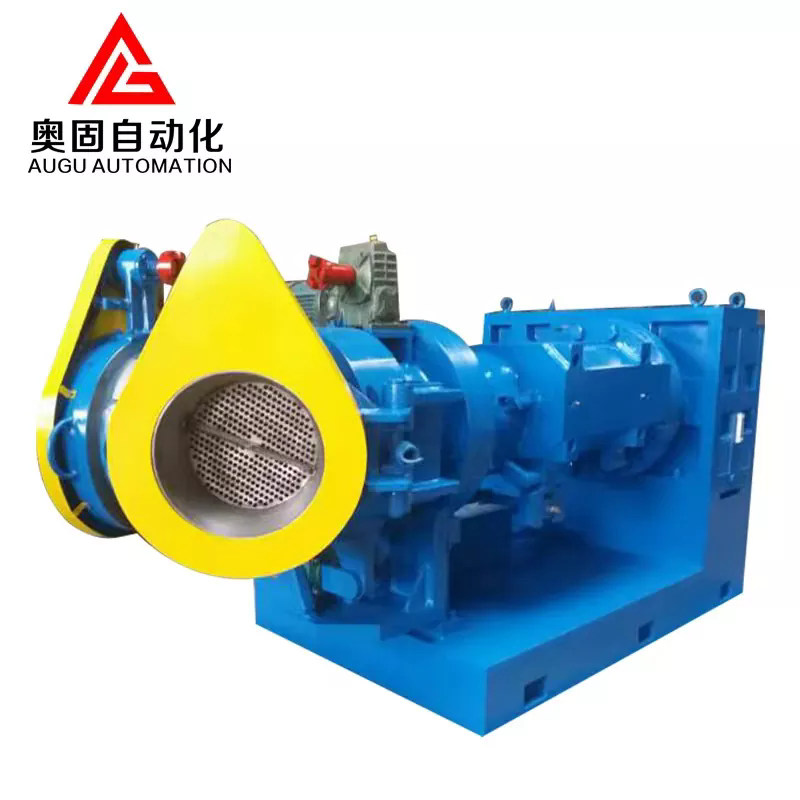The Benefits of Using a Cold Feed Rubber Extruder in Modern Manufacturing
2024-09-06
In the world of rubber manufacturing, precision and efficiency are key to producing high-quality products. One piece of equipment that has become indispensable in this process is the cold feed rubber extruder. This machine is renowned for its ability to deliver consistent results and handle a variety of rubber compounds with ease. In this blog, we’ll delve into the key advantages of cold feed rubber extruders and why they are essential in today’s manufacturing landscape.
What is a Cold Feed Rubber Extruder?
A cold feed rubber extruder is a specialized machine used in the rubber industry to process and shape rubber compounds. Unlike hot feed extruders, which rely on heating the rubber before extrusion, cold feed extruders work with unheated rubber that is fed into the machine at ambient temperatures. This method offers several benefits, including improved control over the extrusion process and better quality of the final product.
Key Advantages of Cold Feed Rubber Extruders
1. Enhanced Precision and Consistency:
One of the primary advantages of using a cold feed rubber extruder is its ability to produce highly precise and consistent rubber profiles. By feeding the rubber at ambient temperatures, manufacturers can better control the consistency of the material and the final shape of the extruded product. This precision is crucial for applications that require exact specifications and uniform quality.
2. Reduced Degradation of Rubber Compounds:
Cold feed extruders help to minimize the risk of degradation in rubber compounds. Since the rubber is not exposed to high temperatures during the feeding process, the risk of thermal degradation and loss of properties is reduced. This results in better preservation of the rubber’s characteristics and a higher quality end product.
3. Improved Material Handling:
Handling rubber at ambient temperatures is generally easier and more efficient than working with heated material. Cold feed rubber extruders simplify the handling process, allowing for smoother operation and reduced risk of material sticking or clumping. This ease of handling contributes to overall operational efficiency and reduces downtime.
4. Energy Efficiency:
Cold feed rubber extruders are often more energy-efficient compared to their hot feed counterparts. By eliminating the need for pre-heating the rubber, these extruders reduce energy consumption and operating costs. This efficiency not only benefits the environment but also contributes to a more cost-effective manufacturing process.
5. Versatility and Flexibility:
Cold feed rubber extruders are versatile machines capable of processing a wide range of rubber compounds. They can handle various formulations, including those with different viscosities and additives. This flexibility makes cold feed extruders suitable for diverse applications, from automotive components to industrial products.
Applications of Cold Feed Rubber Extruders
Cold feed rubber extruders are used in a variety of industries and applications, including:
- Automotive Industry: Manufacturing rubber seals, gaskets, and hoses.
- Industrial Manufacturing: Producing rubber profiles, tubing, and belts.
- Consumer Goods: Creating rubber components for household products and appliances.
- Construction: Extruding rubber seals and weatherstripping for windows and doors.
Conclusion
The cold feed rubber extruder is a vital tool in modern rubber manufacturing, offering numerous benefits in terms of precision, consistency, and energy efficiency. By working with rubber compounds at ambient temperatures, these extruders enhance material handling, reduce degradation, and contribute to a more efficient production process. Whether you are involved in automotive, industrial, or consumer goods manufacturing, incorporating a cold feed rubber extruder into your operations can lead to improved product quality and cost savings. As the demand for high-quality rubber products continues to grow, the cold feed rubber extruder remains a key player in meeting these needs with precision and reliability.



